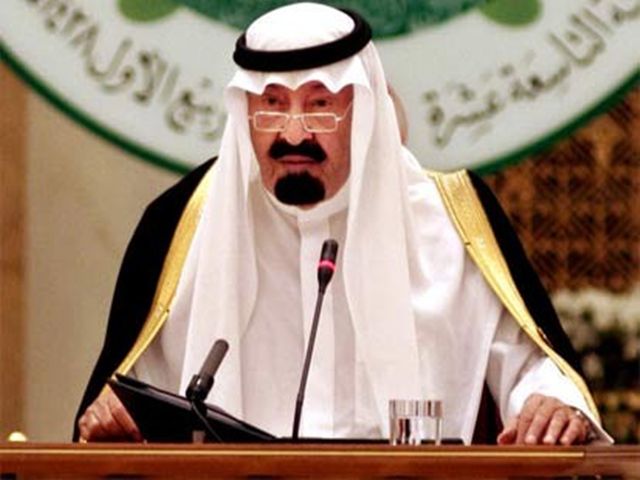
Saudi Arabia’s “Iran Initiative” and Arab Tribalism: Emerging Forces Converge in the Arab World
Publication: Terrorism Monitor Volume: 9 Issue: 38
By:

Seeking to roll back the influence of the Islamic Republic of Iran in the Arab world, the recent “Iran Initiative” of Saudi Arabia’s King Abdullah is a major development in Middle Eastern power politics that will have a significant impact on the security of the region.
Saudi Arabia is working to focus the Arab Sunni bloc, including Sunni Arab tribes and Sunni Arab Islamic political parties, on the perceived Iranian threat to the Sunni Arab heartland. In light of the ongoing Arab uprisings in the region, it is important to understand the complex and interrelated roles that tribes and Sunni Islamist political parties play in Arab states today and the roles they may take on in the future. Sunni Islamic political parties in Iraq, Syria, Libya, Jordan and Yemen, for example, are tied in a complex web of relationships to tribes and tribal politics.
Efforts to combat terrorism and inhibit the ability of radical Islamic movements to fill the political void in Arab Uprising states should include a focus on the tribes inasmuch as they are an important sociopolitical component in these states. Tribes have existed in the Middle East for thousands of years and are a stable form of traditional Middle Eastern communal identity that has weathered the storms of colonialism and modernity. Persons holding a tribal identity are not limited in their economic activities. Tribesmen and women can be pastoral nomads, village agriculturalists, shopkeepers, professors at universities, heads of transnational corporations or leaders of modern Arab states.
Take the case of Iraq. Since 2003, many Iraqis have come to rely more on traditional tribal leadership in the context of the power vacuum created when the old regime collapsed. Deterioration of the economy, unemployment, an insurgency and the rise of militias that fueled sectarian based violence in many parts of Iraq created an opening for the reemergence of traditional tribal forms of leadership and community that provided local-level security and the rule of law throughout much of Iraq. Tribes can and will work to support U.S. interests if such interests are perceived to be complimentary and if incentives are provided (e.g. the critical success of the United States in turning around the situation in Iraq in formerly highly violent tribal areas like Anbar where local sheikhs were cooperating with al-Qaeda in Iraq).
Arab Tribalism in Context
All Arab tribes, regardless of sectarian identity issues, believe they are related by blood and tied together in a history going back to the pre-Islamic Arabian Peninsula. Thus, while it is true that Islamic groups like the Muslim Brotherhood have strong ties to tribes in Syria and Libya, it is also the case that Arab tribesmen and women can and will resist efforts by Islamist groups to control them, both for practical reasons (e.g. funding from state regimes to support tribal sheikhs and local community development) but also because tribesmen and women understand their shared identity through the metaphor of family (i.e. the power of tribal bonds based on blood kinship [real or imagined] can at times trump the persuasive power of religious ideology).
Sometimes labeled as a backward or pre-modern form of social organization, tribalism can be a constructive element in supporting democratic processes and in contributing to conflict resolution. Arab regimes have used both “carrots” and “sticks” to control their tribes. For example, Jordan and the Gulf Cooperation Council (GCC) states have worked to peacefully integrate tribes into their nation building process through education, provision of resources and incentives to abandon semi-nomadism in favor of settling in villages and adopting farming. Others states, like Syria, Libya, Yemen and Saddam Hussein’s Iraq did not hesitate to use fear, violence and deprivation of resources to control their tribes when incentives failed.
Regardless of whether individual tribal leaders have been executed, co-opted, or exiled by the leaders of Arab regimes, tribalism remains a potentially powerful form of political mobilization in the Arab world. Tribes can provide a productive avenue for efforts to inhibit radical Islamist groups from co-opting politics in today’s vulnerable and unstable Arab states. Moreover, there are clearly democratic ideas and traditions within the traditional Arab tribal system. These ideas include notions of equality, consensus building and the place of the shaykh as the first among equals. To these can be added practices such as mediation, negotiation and compensation, all of which come under ‘urf or traditional tribal law. These key cultural concepts and practices are antithetical to radical Islamists, especially those that condone terrorism and suicide attacks. The Iraqi case proves the point; with very few exceptions, authentic Iraqi Arab Sunni shaykhs and their tribesmen and women were driven out of desperation, alienation and fear to align themselves with foreign or domestic Islamist terror groups.
Saudi Arabia Rallies the Sunni World
The Saudi regime contends that Iran is both an immediate and existential threat to the Arab world. To combat this threat, King Abdullah seeks to channel the energy and fervor of Sunni Arab Islamist groups and the Arab tribes and focus them on the “threat” of Iran. Specifically, Saudi Arabia seeks to diminish Iranian influence and Iranian-supported Shiite institutions and leaders in the Arab heartland. In order to bolster this strategy outside of the region, King Abdullah has already started sending his emissaries to China, Russia, and Japan to sign technical partnership agreements in order to establish a web of economic ties with these strategic states (Arabian Business, March 18; Christian Science Monitor, February 23). [1]
King Abdullah has issued a series of decrees to protect the internal security of the Kingdom in the face of the uprisings in Tunis, Egypt, Bahrain and Yemen. Involving the disbursement of hundreds of billions of dollars to ready the Kingdom for conflict with Iran, these orders can be grouped into three type
- Satisfying the citizenry through salary increases and other incentives.
- Satisfying the armed forces through creating more than 60,000 new officer level positions, offering promotions for military officers whose promotions had been on hold due to the lack of vacancies and the creation of a new committee to solve the problems of members of the army and police.
- Most importantly, a series of decrees providing more funding and powers to strengthen the authority of the Wahhabi religious establishment; including an order directed to the media to refrain from criticizing or challenging the religious establishment and to support the Commission for the Enforcement of Religious Law.
Sunni states in the region, including Egypt, Turkey, Morocco and Tunis are vital to the new foreign policy initiative and are being courted through traditional methods of consensus building. The King sent Saudi Foreign Minister Prince Sa’ud al-Faisal to Turkey, Egypt and elsewhere to share thoughts and gain perspective (al-Masry al-Youm, April 12). Since al-Faisal concluded these visits, we have begun to see real changes in, for example, the attitude of the Turkish government towards the regimes in Bahrain and Syria.
Focus on Syria
Syria is a key "battleground" for the new Saudi foreign policy effort. If the regime collapses, Syria’s Arab Sunni tribes will play a pivotal role in the development of post-Assad governance. The future success of the Syrian Islamists rests in no small part on the decisions that will be taken by Arab tribal leaders in key parts of Syria, including the oil-rich al-Jazirah region of northeastern Syria and the region of southwestern Syria that includes Dera’a, along the Jordanian border. [2]
Saudi Arabia’s attempt to activate Sunni Arab resistance to potential Iranian inroads in Syria may have a good chance of succeeding. There is clear evidence of past cooperation between Syrian Arab tribesmen and radical Islamists (both Syrian and foreign). The al-Jazirah region in particular was a major transit point for the movement of jihadi fighters (including al-Qaeda members) into Iraq, at least until late 2007. Syrian tribesmen, due to their intimate knowledge of the terrain of the area and family connections on both sides of the Syria-Iraq border, benefitted immensely from the payments they received for smuggling weapons and fighters into Iraq. Many of these same smugglers found themselves in opposition to the Syrian regime as government troops began to pour into the region in June to repress growing anti-government sentiment (The National [Abu Dhabi], June 16).
Syrian tribal shaykhs and tribesmen interviewed referred to the out-migration of tribal youth away from their traditional communities to GCC states (most prominently Saudi Arabia) as the reason for any increased Islamic adherence amongst tribal youth in the region. Some of these youth have noticeably changed their dress and mannerisms, displaying an outward piety that suggests an increase in the power of Saudi-style Islam to attract Syrian rural tribal youth.
Conclusion
With the recent political and social upheavals in the Arab world, it is important to understand the role of Saudi Arabia in influencing the decision making that is driving Arab tribal leaders and Sunni Islamists in states like Syria, Libya and Yemen today. In this context, the Saudi initiative is, from the Saudi point of view, a forward-looking policy that will confront and defeat what it perceives as an unacceptable level of Iranian influence in the Sunni Arab heartland.
Notes:
1. This section benefited greatly from the analysis of Dr. Faiz al-Alawy, formerly a professor at Baghdad’s Technical University. The term “Iran initiative” was coined by the authors of this article and does not occur in King Abdullah’s decrees and/or announcements referenced here.
2. This section draws extensively from interviews conducted by the authors in 2008-2011 in Lebanon and Syria. Although there are no official figures on tribal demographics in Syria, the authors have come up with a reasonable estimate of the total number of tribesmen and women who comprise the six largest tribes in the northeast region, based on numbers provided by local shaykhs. Thus, the Shammar have around 600,000 members, the Baggara and the Ougaidat 400,000 members each, the Taie 350,000 members, the Ounaiza 300,000 members, and the Jabbour between 250,000 and 350,000 members. Over 60% of Syrian Arab tribesmen and women reside in the al-Jazirah region in Raqqa and Hasakah Provinces, with significant numbers of tribesmen also residing in the provinces of Aleppo and Dera’a.
Carole A. O’Leary is a Visiting Scholar at the Program in Law & Religion within the Columbus School of Law at Catholic University.
Nicholas A. Heras is an M.A. Candidate in International Communication at American University (Washington, D.C.) and a David L. Boren Fellow.





